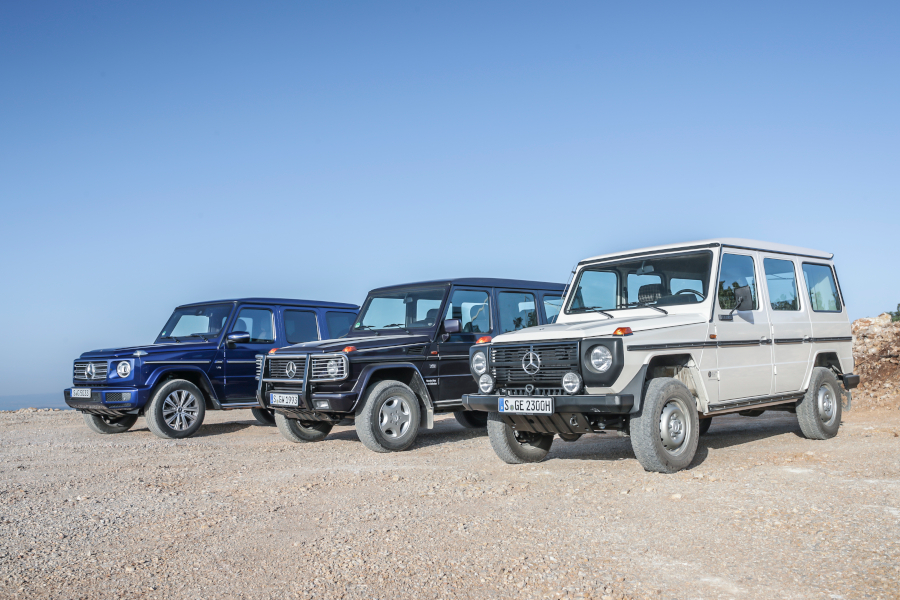In the 1970s, disco ruled the charts, Cold War tensions ran high, and off-road vehicles were meant for soldiers, not celebrities. Yet in that era, a request from the Shah of Iran, then a major shareholder in Daimler-Benz, sparked the creation of a 4×4 that would outlive empires, trends, and generations and that 4×4 was the Mercedes-Benz G-Class.
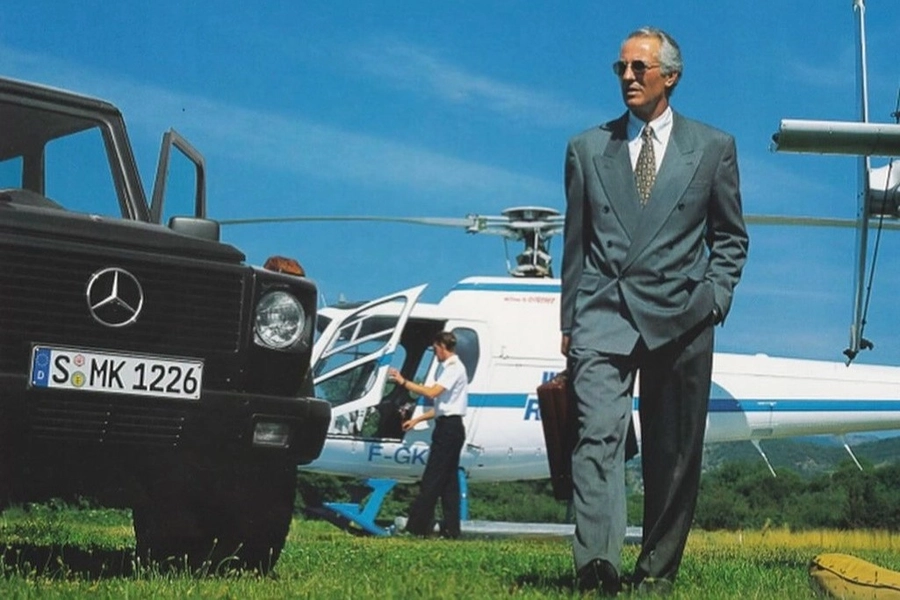
Born out of military precision and royal ambition, the G-Wagon wasn’t meant to be beautiful, it was meant to be unstoppable. Its mission was clear: go anywhere, survive everything. Decades later, it hasn’t changed that much, only the price tag and the owners have.
Mercedes-Benz G-Class – 1970s
The story of the G-Class began in 1972, when Daimler-Benz and Steyr-Daimler-Puch of Austria decided to create a new kind of off-roader — one that combined German engineering with Austrian craftsmanship. The Shah of Iran personally suggested the idea to Mercedes, envisioning a rugged yet dependable military vehicle for multiple terrains.

By 1975, a new factory was set up in Graz, Austria, dedicated to G-Wagon production. After years of testing through deserts, snow, and mud, the G finally broke cover in 1979. It debuted as the Gelandewagen (literally “terrain vehicle”) and was initially aimed at military and government contracts. But Mercedes had civilian buyers in mind too.
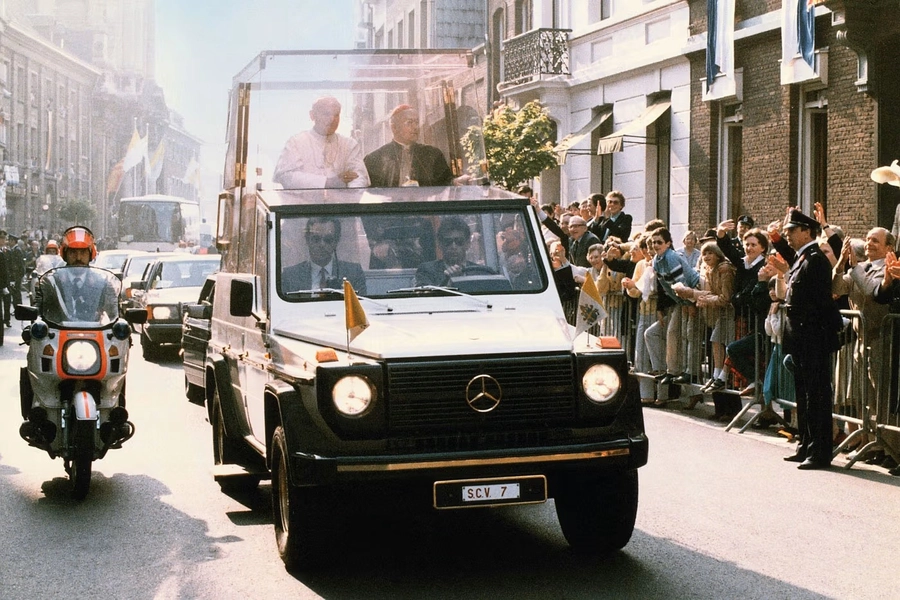
One of the earliest G-Class models served both on the battlefield and at the Vatican, acting as the Popemobile during Pope John Paul II’s 1980 visit to Germany. Finished in white and topped with a transparent glass canopy, it was far cry from the camouflage green military paint.
Mercedes-Benz G-Class – 1979 to 1991 (W460)
The first generation, W460, was raw, simple, and mechanical — a proper go-anywhere vehicle. Available as two-door and four-door wagons, soft-tops, and even pickup variants, it was designed for versatility above all else. Power came from a mix of petrol and diesel engines, from the frugal 240 GD to the more powerful 280 GE.
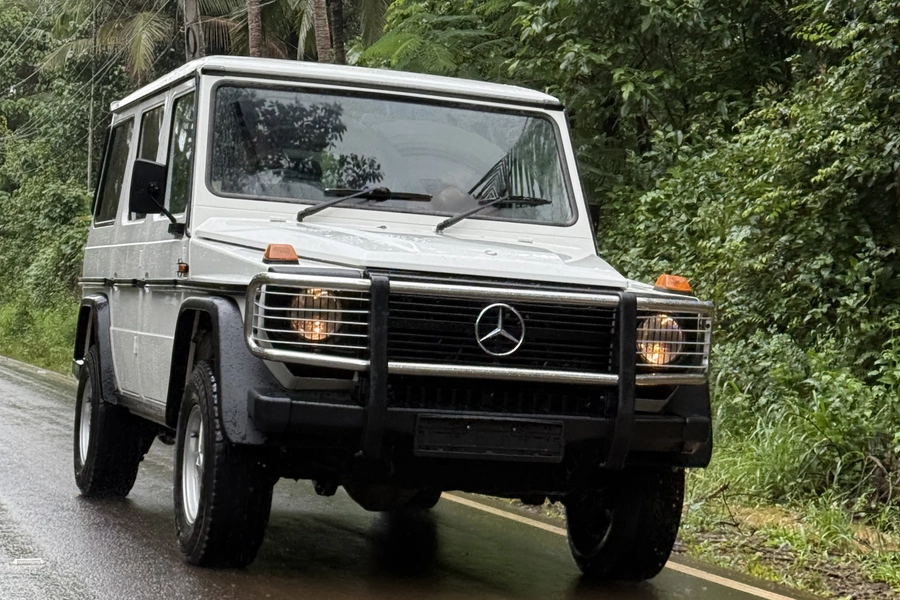
Early models were bare-bones inside. You got vinyl seats, a heater if you were lucky, and a steering wheel that felt like it belonged on a tractor. But its mechanicals were near indestructible. The W460 earned its reputation not in showrooms but in deserts, forests, and battlefields.
Over the years, Mercedes began adding creature comforts — power steering, air conditioning, and even automatic gearboxes. By the mid-1980s, the G had found a loyal following among civilians who valued its unstoppable character. In 1985, Mercedes added front and rear differential locks, making it nearly impossible to get stuck.

By the time the W460 bowed out in 1991, it had proven that the Mercedes-Benz G-Class could be both military-grade and daily drivable.
Mercedes-Benz G-Class – 1992 to 2022 (W461)
Even as luxury began creeping into the G-Class, Mercedes kept one foot in its original territory. Enter the W461, launched in 1992, primarily for armed forces, NGOs, and heavy-duty users.
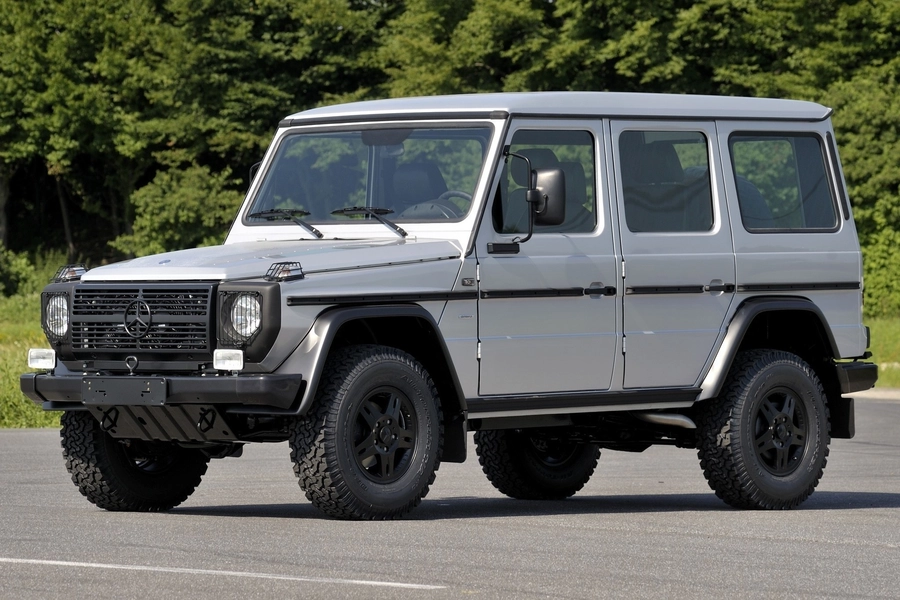
It looked the same from the outside, but under the skin, it shared modern engines and suspension components with the more upscale W463. Civilian versions like the Edition.30 PUR and G-Professional appeared years later — simple, purposeful, and almost nostalgic reminders of the G’s original brief: rugged utility over refinement. The W461 outlived expectations, staying in limited production till 2022, an incredible 30-year run.
Mercedes-Benz G-Class – 1990 to 2018 (W463)
The 1990s were the decade of reinvention, and the G-Class wasn’t left behind. The W463 generation, launched in 1990, marked the G’s transformation from a tool to a trophy. Mercedes gave it permanent four-wheel drive, anti-lock brakes, and a much plusher cabin trimmed in leather and wood.
This was the G-Class that began appearing outside fashion shows instead of military bases. Yet despite its new luxury, it remained mechanically old-school — body-on-frame construction, low-range gearing, and triple locking differentials stayed intact.
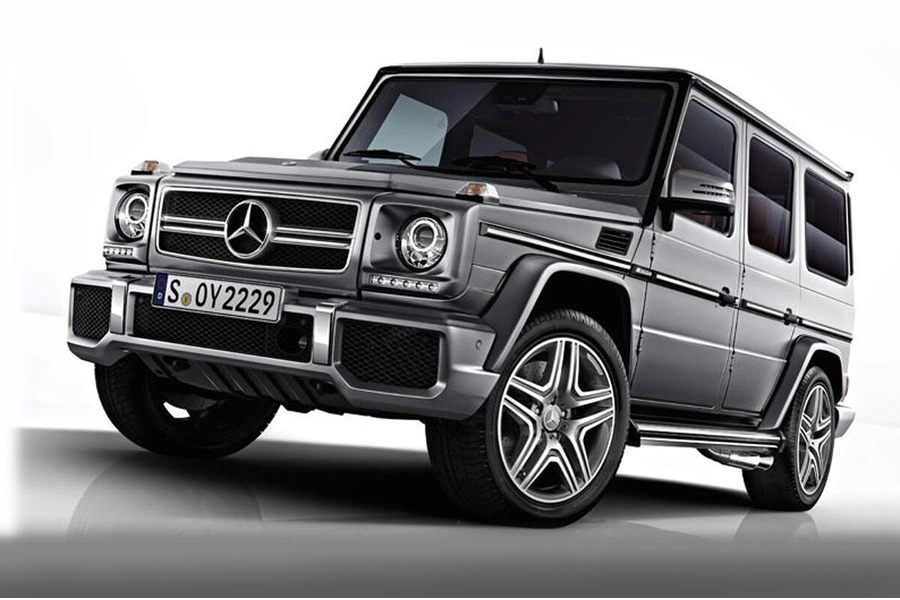
By 1993, the 500 GE arrived with a V8 engine, hand-assembled in collaboration with AMG. That model planted the seed for what the G-Class would become — a blend of brute force and sophistication.
Then came the era of AMG: the G 55 AMG, G 63, and even the G 65 with a twin-turbo V12. Each model louder, faster, and more absurd than the last. The G-Class had become a paradox, a box-shaped SUV with supercar power. Mercedes also pushed the boundaries with limited-run models like the G 500 4×4 squared, featuring portal axles and extreme off-road capability, and the imposing G 63 AMG 6×6, a six-wheeled behemoth that redefined what a G-Wagon could be.
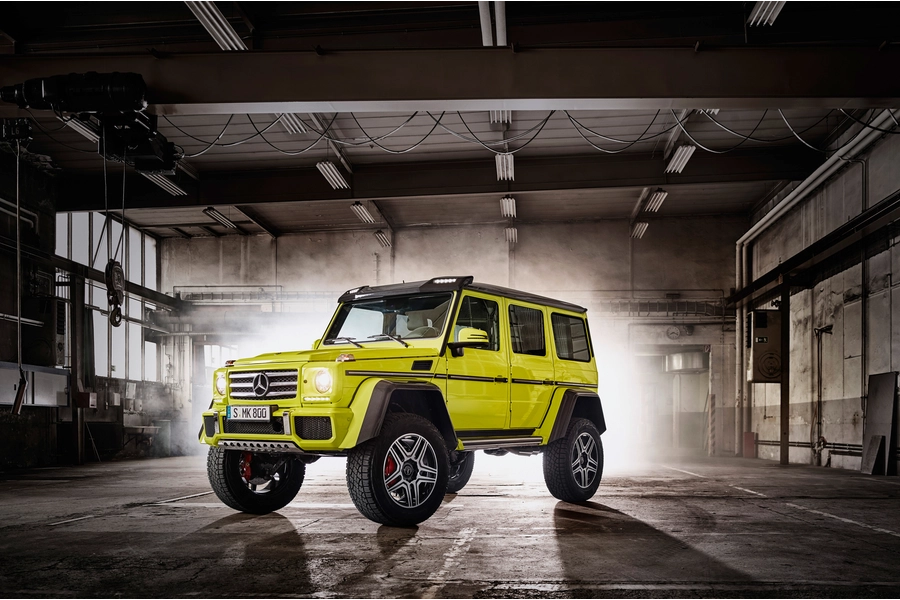
Through countless facelifts, it refused to age. New gearboxes, infotainment systems, LED lights, and luxury appointments came and went, but the silhouette never changed. The G-Class had entered the league of timeless designs and joined the likes of the Porsche 911 and Mercedes-Benz SL.

Mercedes-Benz G-Class – 2018 to Present (W463A)
In 2018, Mercedes finally gave the G-Class its biggest overhaul since birth. But rather than reinvent it, they rebuilt it bolt by bolt, from scratch.

The W463A, as insiders call it, kept the classic shape but introduced a new ladder frame, independent front suspension, and a wider, more stable stance. Inside, the G transformed into a modern luxury SUV, with dual screens, massage seats, and every electronic trick Mercedes could fit in.

Under the hood, the G 63 AMG’s 4.0-litre twin-turbo V8 roars with 577 hp, while diesel variants like the G 450d cater to off-road segment. Despite its tech and power, the G-Class still does what it was born to do, conquer anything it’s pointed at.
Mercedes-Benz G-Class – Electric G
Mercedes-Benz has pushed the evolution of G-Class further with the G 580 with EQ Technology. True to the G-Wagon’s character, it combines the iconic boxy silhouette and legendary off-road capability with cutting-edge electric performance. Four electric motors produce 579 hp and 1,163 Nm of torque, allowing it to rocket from 0–60 mph in just 4.6 seconds, while the 116 kWh battery offers a range of up to 473 km.

Mercedes-Benz G-Class – In the Indian Market
In India, the G-Class is gradually but surely attaining cult status. It first arrived in 2011 in the G 55 AMG guise, immediately catching the eye of Bollywood A-listers, cricketers, and members of the elite. Over time, the next generation truly changed the game with the introduction of the G 63 AMG V8 and even the diesel G 450d, making it slightly more accessible while retaining its unmistakable presence. Today, the craze for the G-Wagon is so intense that cars are often sold out before their official launch, with waitlists stretching months, a testament to its aspirational appeal in the Indian market.
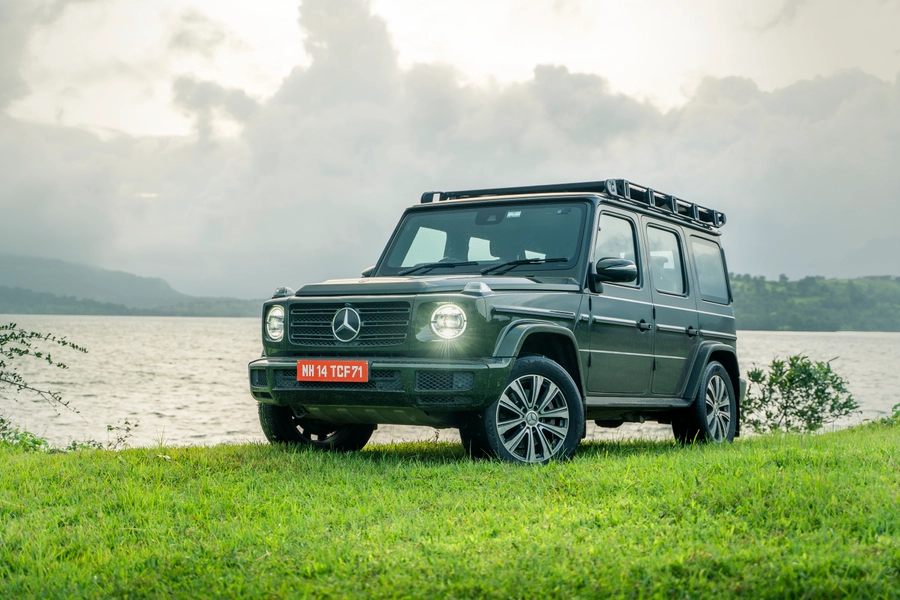
Mercedes-Benz G-Class – Legacy
Today, the Mercedes-Benz G-Class is more than a car. It’s a statement, a cultural icon that stands for durability, power, and unapologetic presence. It’s been everything from a military truck to a luxury limousine, from the Popemobile to the unofficial Hollywood ride.

It has survived political shifts, oil crises, and countless trends, all while staying true to its blocky roots. In 2023, Mercedes celebrated the 500,000th G-Class, a tribute painted in the same Agave Green as the first 1979 model. The Mercedes-Benz G-Class defies the passing years, perfectly living up to its tagline, “Stronger than Time”.

